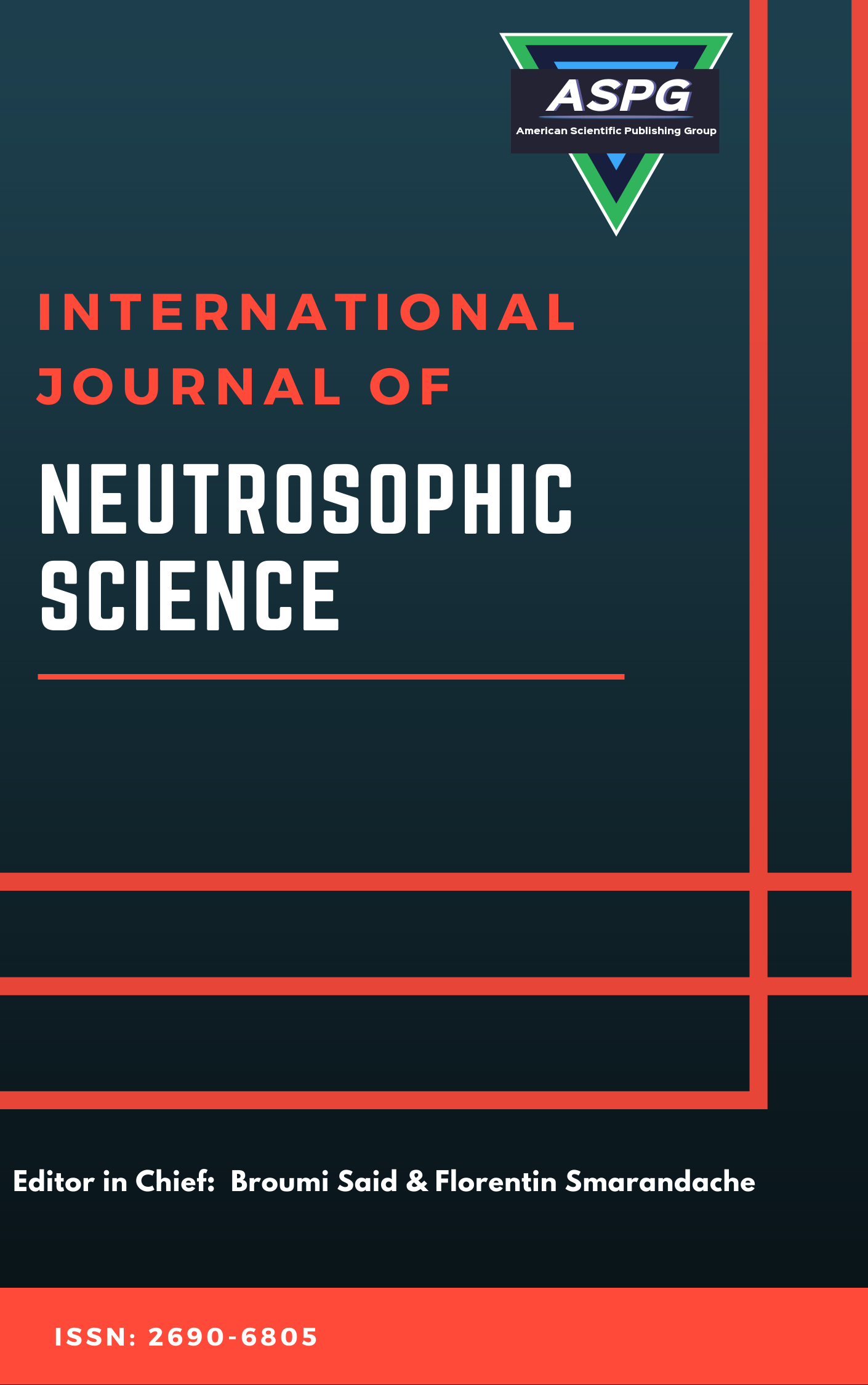

Volume 26 , Issue 4 , PP: 284-297, 2025 | Cite this article as | XML | Html | PDF | Full Length Article
Karla Melissa Ruiz Quezada 1 * , Juan Roberto Pereira Salcedo 2 , Ronald Ricky Alcívar Cabada 3 , Pedro Manuel García Arias 4 , Edison Luis Cruz Navarrete 5
Doi: https://doi.org/10.54216/IJNS.260425
In an increasingly multicultural world, workforces become more diverse, and the challenge of internal communications exacerbates. What one group deems clear communication can easily be reinterpreted, countered or found invalid by another group valuing different cultural mores, norms, and expectations. As these issues grow, not only does organizational coherence suffer, but also strategic impact potential fails as globalized realities emerge. There becomes a need for a model that successfully implements the nuance and indeterminacy of such communicative interactions. While models of intercultural communications exist, they often operate on a binary method of understanding that fails to acknowledge the simultaneous presence of varying levels of truth, indeterminacy, and untruths. This is where neutrosophic plitogenic logic intervenes as the advanced form through which these properties can be modeled to suggest cognitive/emotional/symbolic determination as a single potentialized system of assessment. Thus, the challenge emerges to neutralize indeterminacy by fluidly responding to the communicative elements relative to what is present at any given moment over time. Neutrosophic Plitogenic Logic emerges as a viable interdisciplinary approach to understanding internal communication by theoretical and practical means - using epistemology through organizational studies fields and management feasibility - as it successfully presents the shifting and multivalent form of such a communicative process within increasingly multicultural dynamics when existing reconciled methods fail. This contribution is theoretical - as it creates a tool for fields of study to manage structural ambiguity - and practical - for management purposes - as it fosters a model for inclusion in resilient, contextually viable messaging design.
Internal Communication , Multiculturalism , Plitogenic Logic , Neutrosophy , Indeterminacy , Uncertainty Management , Complex Organizations
[1] P. C. Earley and E. Mosakowski, “Cultural intelligence,” Harvard Business Review, vol. 82, no. 10, pp. 139–146, Oct. 2004, doi: 10.1016/s0024-6301(04)00539-5.
[2] D. Welch and L. Welch, “The importance of language in international knowledge transfer,” Management International Review, vol. 48, no. 3, pp. 339–360, Jun. 2008, doi: 10.1007/s11575-008-0019-7.
[3] L. Smircich, “Concepts of culture and organizational analysis,” Administrative Science Quarterly, vol. 28, no. 3, pp. 339–358, Sep. 1983, doi: 10.2307/2392246.
[4] G. Hofstede, G. J. Hofstede, and M. Minkov, Cultures and Organizations: Software of the Mind, 3rd ed. New York, NY, USA: McGraw-Hill, 2010, doi: 10.1007/s11569-007-0004-9.
[5] M. L. Maznevski and J. J. DiStefano, “Global leaders are team players: Developing global leaders through membership on global teams,” Human Resource Management, vol. 39, no. 2–3, pp. 195–208, Summer 2000, doi: 10.1002/1099-050x(200022/23)39:2/3<195::aid-hrm9>3.0.co;2-1.
[6] N. J. Holden, Cross-Cultural Management: A Knowledge Management Perspective, 2nd ed. Harlow, UK: Pearson Education, 2016, doi: 10.1108/00251741011037786.
[7] C. M. Härtel and G. F. O’Sullivan, “The role of communication in virtual teams,” in The Oxford Handbook of Organizational Communication, 2014, doi: 10.1093/oxfordhb/9780199794334.013.019.
[8] R. Alharbi, “A novel approach for decision-making using neutrosophic set theory in supply chain management,” Mathematics, vol. 9, no. 12, p. 1451, 2021, doi: 10.3390/math9121451.
[9] S. K. Sharma and M. K. Gupta, “Application of neutrosophic numbers in multi-criteria decision making,” Soft Computing, vol. 25, no. 7, pp. 5315–5328, 2021, doi: 10.1007/s00500-020-04617-8.
[10] M. El-Bassiouny and M. A. Hossain, “Neutrosophic logic in decision-making: A comprehensive review,” International Journal of Information Technology, vol. 14, no. 3, pp. 1201–1210, 2022, doi: 10.1007/s41870-021-00642-4.
[11] J. H. Lee and T. H. Kim, “Neutrosophic set based approach for risk assessment in project management,” Sustainability, vol. 13, no. 11, p. 6078, 2021, doi: 10.3390/su13116078.
[12] R. C. M. A. de Almeida, “Neutrosophic decision-making framework for evaluating renewable energy sources,” Energies, vol. 15, no. 6, p. 2100, 2022, doi: 10.3390/en15062100.
[13] F. Smarandache, Plitogenia, conjunto plitogénico, lógica, probabilidad y estadística, Estudio Infinito, 2017.
[14] F. Smarandache, “Conjunto plitogénico,” Nidus Idearum, vol. 27, pp. 59–59, 2019.
[15] Y. Li, H. Zhang, and Y. Wang, “Utilizing neutrosophic sets for enhanced decision-making in smart cities,” Journal of Ambient Intelligence and Humanized Computing, vol. 13, no. 1, pp. 55–65, 2022, doi: 10.1007/s12652-021-03168-5.